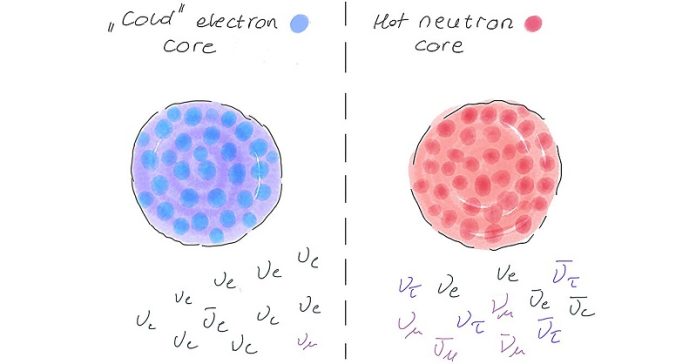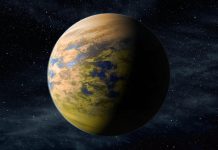
Neutrinos are among the most mysterious particles in the universe.
They are extremely light, travel close to the speed of light, and rarely interact with other matter—so much so that trillions of them pass through your body every second without leaving a trace.
Scientists call them “ghost particles” for good reason.
But despite their elusive nature, neutrinos may play a key role in some of the universe’s most dramatic events: the death of massive stars.
And now, new research suggests that these ghostly particles might have a secret life—interacting with each other in ways we’ve never observed before.
This idea comes from a new study by a team of scientists from the Network for Neutrinos, Nuclear Astrophysics, and Symmetries (N3AS), including researchers from UC San Diego.
The team explored what happens to neutrinos during the collapse of a massive star—one much larger than our Sun. These dying stars eventually explode in a supernova or collapse into a black hole or neutron star.
As a star collapses, its core becomes extremely hot and dense. Neutrinos, which normally escape into space without much effect, begin to interact more. In fact, the researchers suggest that the collapsing star becomes something like a “neutrino collider”—a natural laboratory where neutrinos crash into each other under extreme conditions.
Under the standard model of particle physics, neutrinos come in three types or “flavors”: electron, muon, and tau.
Normally, in a collapsing star, most of the neutrinos are of the electron type. These interactions lead to a relatively cool core and typically result in the formation of a neutron star.
But the new study proposes something more intriguing. If neutrinos have “secret” interactions—ones that don’t follow the known rules of physics—they could transform from one flavor to another more often during a star’s collapse.
This would heat the star’s core much more, resulting in a different outcome: the star might not survive the collapse and could instead form a black hole.
The research is still theoretical, but there may soon be ways to test it.
The upcoming Deep Underground Neutrino Experiment (DUNE), a major new facility in the U.S., might help detect signs of these secret neutrino behaviors. Future observations of supernovae, especially the neutrinos and gravitational waves they produce, could also provide crucial evidence.
If these hidden interactions are real, they could reshape how we understand not just star deaths, but also the fundamental nature of matter in the universe.
As lead researcher Anna M. Suliga and her team suggest, the secret life of neutrinos may be the key to solving some of astrophysics’ biggest puzzles.



